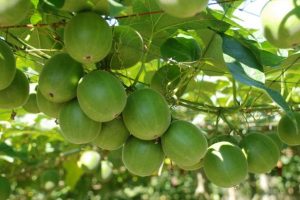What is Inositol?
Inositol was called vitamin B8, but since our body is able to produce a certain amount of inositol by itself, it is no longer classified as vitamin B8. Inositol, commonly known as cyclohexanol, is widely found in a variety of natural animal, plant, and microbial tissues. As it was originally extracted from muscle tissue, it is known as inositol, also known as muscle sugar.

Inositol is found in most foods like, high in wholes grains and citrus. Myo-inositol is the specific stereoisomer from nine Inositol stereoisomers that is commonly used in food and feed products, such as in dietary supplements, energy drinks, and infant nutrition.
Inositol is a safe supplement but high doses may cause mild gastrointestinal distress.
Is inositol a vitamin?
Inositol was called vitamin B8 before, is not officially recognized as a vitamin, because it can be synthesized from glucose by the bacteria within our intestines.
Difference between myo inositol and inositol?
Inositol usually refers to Myo-inositol, the official name is Myo-inositol.
Foods high in inositol
- Studies indicate the largest amount of myo-inositol is found in fresh fruits and vegetables
- Inositol is also found in meat sources and eggs. While meat sources are rich in inositol, it is important to consume only those sources which are grass fed and chemical free sources. If the meat sources are raised on steroids and antibiotics, they can do more harm than good.
- Fruit sources of inositol include oranges, peaches, and pears. Potassium-rich fruits like banana are also considered as foods high in inositol.
- Grains are among the foods high in inositol. Note that inositol occurs in whole grains and not processed, refined grains.
- Legumes and sprouts are also considered as foods high in inositol. Vegetables, such as bell peppers, tomatoes, potatoes, and asparagus, along with green leafy vegetables, are also good sources of Inositol.
- Nuts and seeds also contain a good amount of inositol.
Reference: https://www.sepalika.com/living-well/foods-high-in-inositol/
Inositol Properties
Inositol molecular formula C6H12O6, a white crystalline powder, molecular mass 180.16, density 1.752, melting point 225-227°C. It is odorless and slightly sweet. Its sweetness is half that of sucrose. It is relatively stable in the air, easily absorbs moisture, and its aqueous solution is neutral. Inositol is easily soluble in water, slightly soluble in alcohol, glacial acetic acid, glycerol and ethylene glycol, and insoluble in organic solvents such as ether, chloroform and anhydrous acetone. At temperatures lower than 50°C, dihydrates of colorless monoclinic crystals can be crystallized from water, and can be dehydrated to an anhydride at 100 to 110°C.
Inositol is a member of the vitamin B family, and is a lipophilic vitamin like choline; inositol and choline combine to form lecithin; the unit of measurement is mg (mg); Application: For the preparation of multivitamin pills and various nutritive amino acid-vitamin infusion products. In addition, it can also be used for the treatment of liver cirrhosis, hepatitis, fatty liver, arteriosclerosis, hypercholesterolemia, hyperglycemia, and carbon tetrachloride poisoning, as well as for the synthesis of nicotinic acid inositol esters, pulse and other drugs.
At the same time it can also be used directly as drugs, such as inositol tablets, liver alcohol. Inositol also has the effect of preventing skin aging and hair loss and promoting the growth of various species and yeasts, and is used as a food additive. The use of inositol in the human body can reduce cholesterol and promote the growth of healthy hair; also can prevent hair loss and eczema; to help redistribution of fat in the body (redistribution); have a sedative effect.
Inositol and biflavin are combined together to make yolk. Inositol plays an important role in the supply of brain cell nutrition. It helps to prevent arteriosclerosis by metabolizing fat and cholesterol and lowering cholesterol. It can also remove liver fat, promote the growth of healthy hair, prevent hair loss, prevent eczema deficiency eczema, and makes hair whiter. The use of inositol in foods: Inositol is a “bioactive hormone” involved in metabolic activity in the body. Inositol has many functions such as immunization, prevention and treatment of certain diseases, and can be used in the fermentation and food industry. The growth of many species of bacteria and the promotion of yeast growth, etc., if the lack of inositol in animals, there will be growth stagnation and hair loss and other phenomena, the daily demand for inositol in humans is l-2g, many health drinks and children’s food All have added inositol.
Inositol Function and benefits
Similar to the effect of vitamin, increased energy, lower cholesterol, prevent eczema, natural tranquilizer, promoting hair growth.
Inositol – In this case, inositol is an essential nutrient source for birds and mammals. For example, mice can cause hair loss and rats can cause symptoms such as abnormalities around the eyes due to lack of inositol. Rats can metabolize inositol in large amounts, but not much in the urine. Sharks seem to be able to convert inositol into a substance that stores energy. It is one of the ingredients of Lifeline I. Inositol is a water-soluble vitamin; one of the vitamin B family, inositol and choline are also fat-like vitamins, also known as cyclohexanol can promote cell metabolism, promote development, increase appetite For the treatment of hyperlipidemia, cirrhosis.
- Inositol can lower cholesterol, promote healthy hair growth, prevent hair loss, eczema, liver fat metabolism, and help weight loss, it has a calming effect.
- Inositol can be used as feed additive for fish, shrimp and Livestock ,it can promote the rapid growth of fish, enhance immunity, and achieve a high and stable yield. In the recent years, through demonstration experiments, it proves that inositol is the essential feed additives in aquaculture .
- Inositol is the premise of the synthesis of many biological molecules, it can be used for the synthesis of galactose inositol, and so on.
Inositol Manufacturing process
The raw material for manufacturing inositol is Phytin. Phytin is widely found in the seeds of plants. The commonly extraction method is using diluted acid extraction and then alkali neutralization precipitation. That is to say, soaking raw materials with dilute inorganic acid, and then using calcium hydroxide – alkali. The neutral solution precipitates in the solution to obtain a pasted Phytin product. Due to the different raw materials used, the manufacturing process is slightly different.
Inositol from rice bran
The extraction of phytin from rice bran is currently a major method. Domestically, defatted rice bran is usually used as a raw material, soaked in 8 to 9 times the 0.1% hydrochloric acid of rice bran for 6 to 8 hours. The soaking solution is discharged, and lime milk is used as a precipitant to adjust the pH. A PH value about 5.8 to 6.0 can be used to make the precipitation of Phytin. When the rice bran is leached with acid, neutral salts such as urea, ammonium sulfate, ammonium bicarbonate, Glauber’s salt, and salt are added to prevent the dissolution of hydrocarbons, proteins, and oils and fats, and the amount thereof is 0.5% to 5% of the leach liquor.
Inositol from wheat bran
Phytin can also be extracted from wheat bran. Compared with rice bran, wheat bran contains a large amount of starch and is directly fed into the production of Phytin. The yield is only 3% to 4%. If the starch is prepared by rough grinding or sieving to remove the starch, then the yield can reach about 8%. Crude starch is sold and its value is higher than that of wheat bran. This process is economically more cost-effective.
The manufacturing process for extracting phytin from wheat bran is as follows: wheat bran → rough grinding or sieving → acid leaching → neutralization sedimentation → filtration → washing →pasted Phytin.
Inositol from Corn or Corn soaking water
The corn grain contains 1.31% of Phytin. During the production process of the corn starch factory, a large amount of sulfite corn soaking solution is produced, which contains 0.5% to 1.0% of phytin, which was treated as waste water to discharge and pollute the environment. Using corn steep liquor manufactures Phytin is usually prepared by a single precipitation of lime. Soak the solution for 3 to 4 days to remove impurities, filter out the clear liquid, and under constant stirring, neutralize with 10% lime, mix thoroughly, adjust the pH value to 5.8, and let stand for 2 hours to make the phytin full. Precipitation precipitated. Extracting phytin from corn soaked waste water is more economical than rice bran and wheat bran.
Phytin can also be extracted from corn or legume starch. For example, rice bran cake, the content of phytin is around 8%, extraction rate can be 80%, production capacity of Phytin can be around 52kg/ton.
Pressurized hydrolysis method is the traditional method of inositol production. The pasted Phytin and water are pulped into a pressure hydrolysis cooker at a ratio of 1:3 to 3:5. The reaction is stirred at a hydrolysis pressure of 0.5 to 0.6 MPa. 10h, when the pH is about 3 ~ 3.5, the hydrolysis is complete.
In the hydrolysis process, fresh lime is added in portions to neutralize; the controlled pH value to 3 – 3.5, the byproduct calcium phosphate can be directly used as phosphate fertilizer or processed into feed additive phosphate. Then add activated carbon fiber to the above neutralization solution with a solution amount of 0.5% to 1.5%, and after decoloration by boiling for 20 minutes, inositol was filtered while hot. The filtered serum is sent to vacuum concentration, concentrated to a relative density of 1.28 to 1.30, cooled and crystallized, centrifuged, and the isolated crude inositol is sent for purification, and the the liquor is used to recover inositol therein.
The crude inositol was added to distilled water at a ratio of 1:1.2 to 1.5, heated and dissolved, and put pharma grade activated carbon, the quantity is about 1.5% to 2.0% of crude inositol. After decoloration by boiling, the solution was filtered by suction and the filtrate was cooled to 32°C. Left and right, filtration and crystallization, and finally the crystals are washed with a small amount of anhydrous ethanol to obtain inositol as a wet product. The mother liquor separated during the refining process is concentrated and sent to a purification process to minimize the loss of inositol. The wet inositol is dried at 66 to 70°C to obtain a finished product.
The hydrolysis process is a key step in the manufacturing of inositol. The complete degree of hydrolysis determines the inositol yield. Low temperature and low pressure hydrolysis process yield up to 2% to 3%, currently the method widely used among domestic and abroad manufacturers is the pressure hydrolysis process, the working pressure is mostly 0.3 ~ 0.8MPa, foreign is 1.5 ~ 2.5MPa. Increasing the reaction pressure will shorten the hydrolysis cycle and increase the product yield. The key factors of the hydrolysis reaction are the pH, reaction temperature and operating pressure of the hydrolysis slurry. The pH of the hydrolysis slurry is 4.5, the hydrolysis temperature is 170-180°C, and the pressure is 0.7-0.8 MPa. The hydrolysis is carried out for 8-9 hours. The rate can reach more than 95%.
Many China manufacturers use calcium carbonate in the hydrolysis process. Addition of inositol into the additives can increase the hydrolysis rate, reduce the inositol loss, and help improve the product quality. The added amount is generally about 5%. The addition of calcium carbonate can reduce the soluble phosphoric acid and phosphate in the hydrolyzate, generate more insoluble phosphate, accelerate the hydrolysis rate, facilitate the hydrolysis, reduce the burden of neutralization and salt removal, and add calcium carbonate to the pH of the hydrolyzate. A value above 5 reduces the corrosion of the hydrolysate to the equipment, but a large amount of carbon dioxide is generated at a certain stage during the hydrolysis process to increase the pressure rapidly, and the hydrolysis tank needs to be equipped with an explosion-proof device.
Phytin is hydrolyzed to inositol, insoluble calcium phosphate, and soluble calcium dihydrogen phosphate, calcium hydrogen phosphate and a small amount of phosphoric acid. In order to separate inositol, neutralization precipitation is required. In the traditional process, the precipitant is the oxides of alkaline earth metal and hydroxides are used alone, and it is difficult to grasp many factors such as the concentration of the precipitant, the way of adding, the control of the pH value and the determination of the neutralization end point. The use of a composite precipitant to neutralize the salt can avoid the formation of inositol complexes, make the reaction stable, the pH value can be better controlled, and the loss of inositol during salt removal can be reduced.
The purpose of the purification is to remove the ions and pigment impurities in the crude inositol. Domestic manufacturers generally use reagents for impurity removal, which has the advantages of simple operation and low cost.
The specific operation is: at 80-90°C, the activated carbon fiber is added for decoloration to colorless and transparent. After decoloration, Ba(OH)2 and oxalic acid are added under the condition of pH 7.0 to 8.0, and a small amount of Ba(OH)2 is added first. After a few minutes, a small amount of oxalic acid is added to strictly control the pH to 7.0 to 8.0. Other impurities, activated carbon and oxalic acid need to be pre-treated. In order to further increase the purity to meet the requirements of the pharmacopoeia, it must be further refined and treated as described above.
The commonly used impurity removal method in foreign countries is the ion exchange resin method, which removes cations through cation exchange resin columns, and then removes acid ions and other ions through anion exchange resin columns. After such treatment, the quality and yield of inositol will be greatly improved. , And a crystallization that is pure inositol. The use of ion-exchange resins can reduce product losses, which can increase 2% to 4% over conventional methods. Impurity ion removal is complete, inositol finished product quality is good, and it is not necessary to use ammonium oxalate, barium hydroxide, activated carbon and other raw materials, shorten the process flow, processing capacity, suitable for inositol mass production, but the resin regeneration costs higher
From the raw material corn – corn soaking water – phytin – Inositol ,we have the complete production chain and use our factory’s own corn soaking water to extract the phytin ,this will make our Inositol ‘s quality more stable.
From corn soaking water, all the material through the stainless steel pipeline airtight transportation, the intermediate products Phytin directly transport to the inositol workshop, which will greatly shorten the cycle ,avoid the loss of the intermediate links and reduce the transportation costs. Fuli factory have a good layout and functional, systematic workshop design, production control automation, and continuous production process.
Inositol Use & Application
Inositol can be used in functional beverage, dietary supplements, infant milk powder, medicine, health products, aquatic feed additives (fish, shrimp, crab, etc.), personal care products, senior pet supplies.
Used in Poultry feed/Animal feed
Inositol acts as a bioaccelerating agent in the feed industry and is used in high quality Poultry feed/Animal feed to increase the contraction of the digestive tract, promote gastric motility, and promote the digestion and absorption of food. Lack of inositol in higher animals can cause growth arrest, hair loss, dermatitis, slow digestion and absorption of food, and disturbance of physiological activity in the body.
Inositol has a multi-vitamin function, which can regulate the metabolism of dairy cows, promote the synthesis and secretion of milk, and help to improve the digestion, absorption and utilization of nutrients in Poultry feed/Animal feed. Its taste is slightly sweet and can improve feed palatability, so it can Improve milk intake and milk production.
Inositol can increase milk fat, milk protein, lactose content.
In the United States, in order for dogs to grow healthily and reduce disease, proper amount of inositol is added to the dog food, and inositol is added to the diet in an amount of 2 to 4 mg/10 kg body weight.
Myo-inositol can promote the growth of the skin of the moss, making it glossy and bright. Under normal circumstances, the inositol dosage 2~4mg/10kg body weight is added to the diet. Hydra skin abscission is a disease caused by a lack of vitamin inositol in the diet that causes metabolic disorders. The diseased hairs and hairs fell into pieces and the light part of the hair was removed, and the entire body was exposed. If it occurs in the breeding season, it affects normal reproduction. In the season of skin removal, it seriously affects the quality of the skin. If not treated, it will also cause death. The inositol inositol supplementation was increased 5 times and used with vitamin B2. According to actual experience, the dosage of inositol 10 to 20 mg/10 kg body weight was added to each leeches diet.
Practice has proved that adding proper amount of inositol to the feed can promote the growth of livestock and prevent death. The amount added in the diet is generally 0.2~0.5g.
Used in aquaculture
At present, many large feed companies in China and abroad have used inositol as a nutritional additive to aquatic feed. In aquaculture, inositol as a vitamin is added to the feed to increase feed efficiency, accelerate fish growth, promote fat metabolism in the liver and other tissues, and increase growth rates by more than 10%.
Inositol in fish farming applications
Inositol, an indispensable nutrient for fish, is an indispensable low molecular organic matter for aquatic animals, especially aquatic animals with high economic value, and plays an important role in maintaining its normal physiological functions. After inositol is absorbed by fish, it is present in the liver and serum, and can increase the activity of cholinesterase, thus contributing to starch digestion and body weight gain in vivo. When inositol intake is insufficient, fish growth, anemia, fin rot, and feed conversion rate are low.
Inositol in crustaceans
Studies have shown that inositol as a growth promoter significantly increases the growth of shrimps and river crabs.
The lack of inositol can cause a variety of illnesses
Many studies have shown that the lack of inositol in animals, especially in aquatic animals, can cause great harm to normal growth. The lack of inositol in rainbow trout causes anorexia and digestive effects to slow down, hepatic triglycerides increase, and the total phospholipid mass decreases. The lack of inositol in carp causes skin damage, lesions, and slow growth. Japanese quail lacks inositol in the grayish bowel, low appetite, and production stagnation.
Inositol promotes the growth rate and survival rate of parrot fish, squid, and gums in Japan. In the absence of fish, fins are eroded, growth is poor, and mortality rate is increased.
Using proper amount of inositol to the feed can increase the utilization of feed fat in grass carp juveniles and increase feed value.
Using inositol during goldfish culture can significantly increase the swimming ability of goldfish.
Recommended Dosage in aquaculture
The dosage of Inositol used in aquatic products based on years of research and practical experience, the amount of inositol added to feeds of different types of aquatic products is as follows:
| Application and use | name | Inositol dosage mg/kg |
| Fish | grass carp | 166-214 |
| Squid and frogfish | 1000 | |
| Squid and mackerel | 150 | |
| Tilapia | 350 | |
| Cobia | 200 | |
| eel | 500 | |
| Crustacean | prawn | 4000 |
| Shrimp | 2000 | |
| Chinese mitten crab | 400 |
Used in food
Application in the field of food additives Inositol is one of the vitamin B family and is also widely used as a food additive in vitamin functional/energy beverages, baby milk powder, health food products and pharmaceuticals.
Inositol Side effects
Is inositol safe?
Although Inositol is considered safe, there may be some possible side effects such as nausea, stomach pain, tiredness, headache, and dizziness.
Can inositol cause anxiety?
It is helpful anxiety.
Myo-inositol is safe for pregnancy and breastfeeding?
Pregnant and breastfeeding mothers are not advised to consume inositol though there is no research that shows the side effects.
Inositol Market
Global market demand and trend
The application field of Inositol is gradually expanding and the market demand continues to increase. Inositol is used for a wide range of purposes. It has the effects of metabolizing fat and cholesterol and is used to treat hepatitis, cirrhosis, fatty liver and high cholesterol in the blood. It also promotes healthy hair growth, prevents hair loss, prevents eczema, and helps redistribution of body fat; in addition, inositol also plays an important role in the supply of brain cell nutrition. Inositol is also a “bioactive element” involved in the body’s metabolic activities, with many functions such as immunity, prevention and treatment of certain diseases.
In recent years, people have found that inositol has many new uses, and its application field is constantly expanding. Such as: chemical synthesis of paclitaxel, its cancer treatment effect is poor, but if modify inositol, the effect in cure cancer will be better than natural products, which has become the new consumption point of inositol in the pharmaceutical industry today. Fluorositol is a new product that has been developed in recent years and has anti-cancer and high-level immune functions. Inositol deep processing can be made inositol methyl ether, inositol peptides and other products, in the pharmaceutical, chemical and other industries have great practical value. In addition, people have also found that inositol and sarcoma alkaloids can convert fat into heat energy. As a result, inositol-containing fat-reducing body-building foods and nutritional products containing inositol have become popular in Europe and the United States, and future demand will continue to increase.
With the accelerated civilization of the population and the improvement of living standards, people’s demand for health foods continues to increase. The high nutritional value of fish meat just satisfies this requirement. According to authoritative data, in recent years, due to changes in consumer demand and aquaculture structure, the average annual growth rate of aquatic feed production in China has been as high as 17%, and the proportion of pig feed and poultry feed has been declining. The aquatic feed industry has become the biggest bright spot in the development of the feed industry, and it has become the industry with the fastest development, the best benefits, and the greatest potential in the feed industry in China. Inositol as a vitamin additive for aquafeeds will increase in use year by year. On the other hand, with the gradual popularization of vitamin functional/energy beverages, the use of inositol is gradually increasing.
Inositol manufacturers
Inositol is an essential vitamin needed for protein, carbohydrate and fat metabolism. China production occupies the large part in the world.
China is the big food and feed grade Inositol manufacturers and export country in the world.
In 2000, China’s inositol export volume was 1400 tons; in 2004, the export volume reached 2,000 tons; in 2006, the export volume was 2,400 tons; in 2009, the export volume reached 2,600 tons. In recent years, due to the strong demand for inositol in the global market, China’s exports have increased rapidly. In 2010, the export volume exceeded the 3,000-ton mark to reach 3,300 tons; in 2013, the export volume was 3,600 tons; in 2014, the export volume exceeded the 4,000-ton mark, which was 4,200 tons; in 2015, the export volume reached 4,450 tons, and the export amount It was US$ 35.86 million. In 2016, China’s inositol export volume was 4,836 tons, an increase of 8.67% year-on-year, a record high, and the export amount was US$30.79 million, a decrease of 14.1% year-on-year.
The export prices of myo-inositol have fluctuated up and down in the past ten years, and the magnitude is relatively large. The main export destinations are Asia, Europe and North America. Inositol exported to these three regions accounts for 90% of total exports. The United States, Europe, and other developed countries are the main destinations for inositol exports in China, of which inositol exports to the United States account for about 20% of China’s total exports.
There are several Inositol manufacturers in China and abroad, as you know, the price of China suppliers can be better than abroad manufacturers. We have worked with China top manufacturer for years, we would like to recommend our selected Inositol manufacturers to you if you would like to save your purchasing cost with the same quality compared with abroad manufacturers. Samples are available if you need it for further test.
Where to buy Inositol?
You can buy food or feed grade Inositol from us. Our inositol originates from a specially selected non-GMO species of corn, specification complies with NF/FCC/USP/EP standard.
We’re committed to the quality and safety of our ingredients. We know that our customers expect us to use only the highest quality food additives & ingredients with better price, and we do everything we can to satisfy those expectations.
If you have any other questions, please email us through: info@foodsweeteners.com




